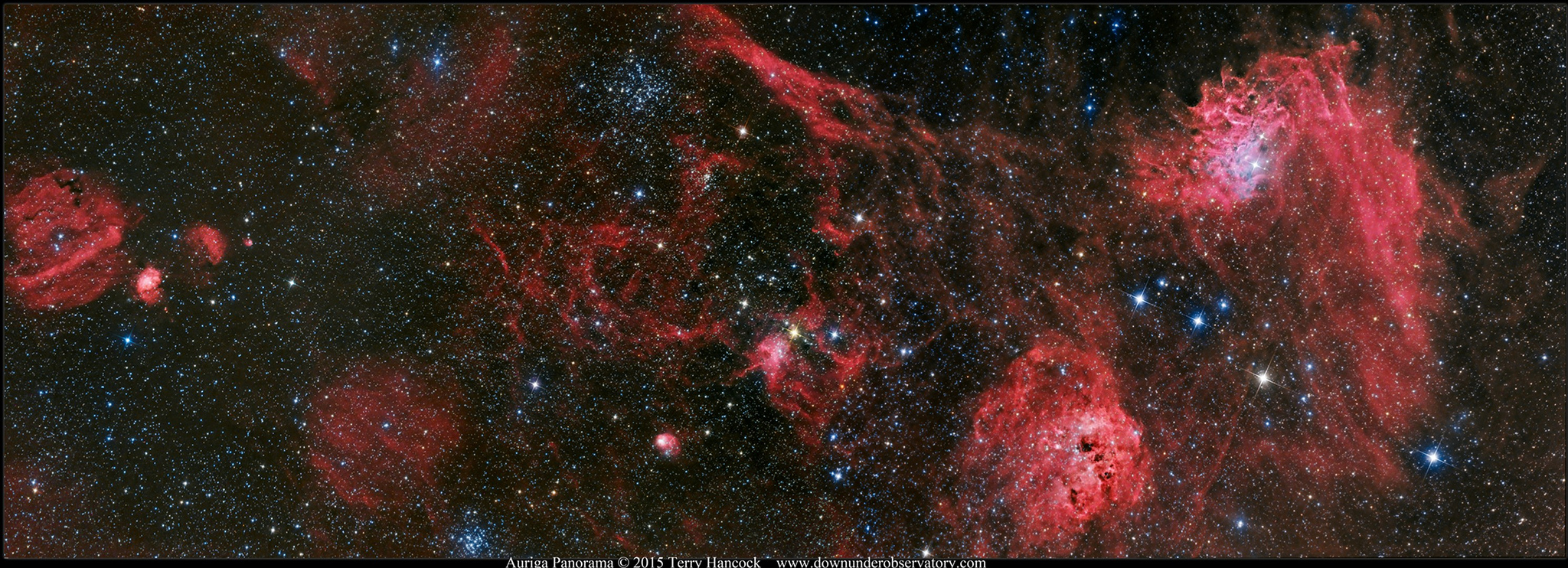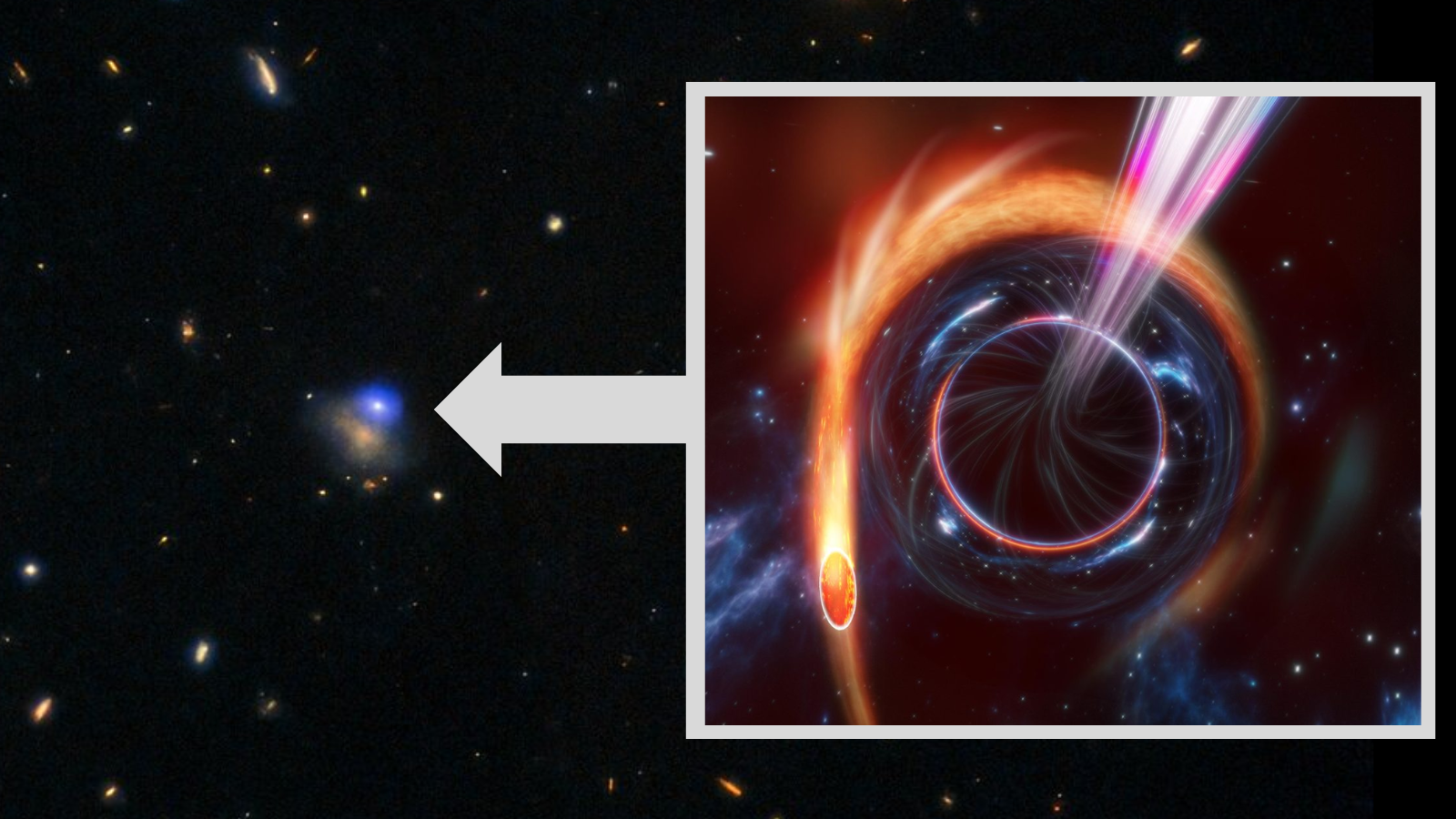A Cosmic Garden: Stunning Blooms Captured in Skywatcher Photo

Call it a garden of cosmic proportions: Blooming against the blackness of space are no less than five stellar nebulas and two star clusters, captured by night sky photographer Terry Hancock.
This panoramic view of a region in the Auriga constellation is blossoming with cosmic activity. In view are the Flaming Star Nebula (IC405), the Tadpoles (IC410), the star cluster known as The Spider (IC417) and The Fly Nebula (NGC1931), Messier open clusters M36 and M38 (which is also known as the Starfish Cluster), and emission Nebulae Sh2-232 and its smaller companions.
Near the top right of the image is the comma-shaped Flaming Star Nebula, named for its fire-like look. The burning heart of this nebula is the star AE Aurigae, which was likely born in a different stellar cluster and booted out by a collision with two other stars.
The large, spherical cloud in the far left of the image is the emission nebulas Sh2-232, accompanied by its smaller companions Sh2-231 and Sh2-235.
Near the lower-middle region of the image is a small nugget of light called NGC 1931, also known as The Fly. Just up and to the right is NGC 1931, another bright collection of stars surrounded by spindly threads of gas, known as The Spider. Each of these objects are young, open star clusters still nestled in clouds of hydrogen gas.
Hancock has photographed some of these objects individually, but for this image he took on the challenge of imaging a wider range of sky. From his backyard observatory in Fremont, Michigan, Hancock create the image over two nights, with a total integration time of 384 minutes.
You can see more of Terry Hancock's work on his Flickr page. To see more amazing night sky photos submitted by Space.com readers, visit our astrophotography archive.
Breaking space news, the latest updates on rocket launches, skywatching events and more!
Editor's note: If you have an amazing night sky photo that you'd like to share for a potential story or image gallery, please send images and comments in to managing editor Tariq Malik at spacephotos@space.com.

Calla Cofield joined Space.com's crew in October 2014. She enjoys writing about black holes, exploding stars, ripples in space-time, science in comic books, and all the mysteries of the cosmos. Prior to joining Space.com Calla worked as a freelance writer, with her work appearing in APS News, Symmetry magazine, Scientific American, Nature News, Physics World, and others. From 2010 to 2014 she was a producer for The Physics Central Podcast. Previously, Calla worked at the American Museum of Natural History in New York City (hands down the best office building ever) and SLAC National Accelerator Laboratory in California. Calla studied physics at the University of Massachusetts, Amherst and is originally from Sandy, Utah. In 2018, Calla left Space.com to join NASA's Jet Propulsion Laboratory media team where she oversees astronomy, physics, exoplanets and the Cold Atom Lab mission. She has been underground at three of the largest particle accelerators in the world and would really like to know what the heck dark matter is. Contact Calla via: E-Mail – Twitter
